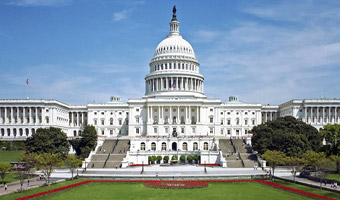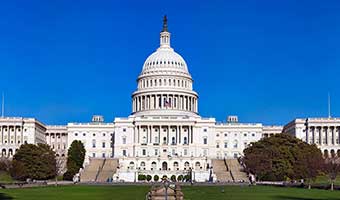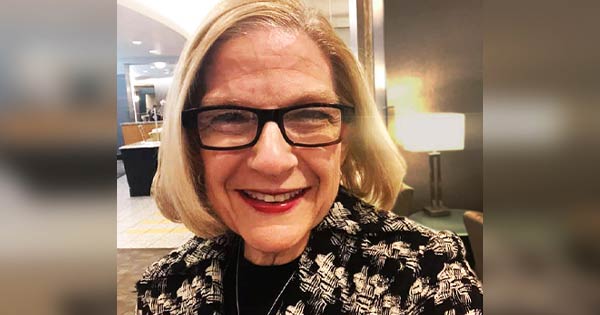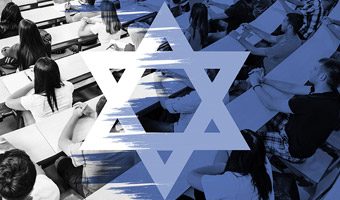Check out the featured article: Zionism, Israel and Refugees from the May- June 2018 Issue of Women Who Learn. To receive a copy of the latest issue of Women Who Learn email programming@hadassah.org.
The history of the modern Zionist movement from the pre-State period to the present has been punctuated by the arrival and absorption of waves of immigrants. Although Jews had maintained a small presence in Eretz Yisrael for centuries, the early modern pioneers (halutzim) were themselves relocated Jews hailing predominantly from Eastern Europe. These early settlers came to find a homeland and a refuge for Jews who had suffered persecution throughout the Diaspora. They sang a spirited anthem in which they asserted,”Anu banu artza, livnot u-l’hibanot ba. We have come to our land to build and to be rebuilt in it.”
The Zionist enterprise was defined by the Aliyot (immigration) of successive groups of settlers who emigrated from predominantly Ashkenazi communities. The pre-State Aliyot occurred between 1882 and 1939.
- First Aliyah: 1882-1903 comprised of Russian Jews who founded the first settlements of the Modern Era: Mikveh Yisrael, Rishon Le Zion, and Petach Tikvah, financially assisted by Baron Rothschild and Sir Moses Montefiore.
- Second Aliyah: 1904-1918 brought the highly politicized members of the Poalei Zion, whose socialist ideology led to the creation of the first Kibbutzim and Moshavim, as well as a self-defense organization, Hashomer, which eventually morphed into the Haganah, the precursor of the Israel Defense Forces. Several future leaders of Medinat Yisrael, the State of Israel,came to Palestine during this period including David Ben Gurion, Yitzchak Ben-Zvi, national poet Chaim Nachman Bialik, and Rav Abraham Isaac Kook, father of religious Zionism.
- Third Aliyah: 1919-1923 brought more Eastern European Jews to Palestine; they continued to build settlements and develop the land. Both Golda Meir and Henrietta Szold made Aliyah from the United States in this period.
- Fourth Aliyah: 1924-1928 brought middle class Polish Jews who began to develop the business and industrial sectors of their new homeland.
- Fifth Aliyah: 1929-1939. As Hitler came to power in Germany, immigration to Eretz Yisrael from Europe increased. The new olim, immigrants, became bankers, industrialists, and jurists.
- Aliyah Bet: Beginning in 1938, illegal immigrants were brought to Palestine in defiance of the White Papers promulgated by the British to restrict absorption of European Jews desperate to escape Nazism.
- Aliyat Noar-Aliyat Yeladim: Beginning in 1933, under the stewardship of Recha Freier and Henrietta Szold, this program was designed to rescue children in need. It began with the hope to save European Jewish youth from the Nazis, and continues to the present day to address the needs of children at risk.
The character of Aliyah changed after the establishment of the State. The Jews from the Edot HaMizrach, the lands of the Middle East, Spain (Sepharad), the Mediterranean, and parts of North Africa comprised the bulk of these Aliyot. The Sephardi Jews from the Iberian Peninsula had already established small yet vibrant communities in Tsefat and Jerusalem, but, despite their rich cultural, intellectual, and spiritual traditions, had not had a tremendous impact on the development of the Yishuv.
Operation Magic Carpet: 1950 brought the bulk of the Yemenite Jewish community to both Eretz Yisrael and to the world of twentieth century technology. Over 45,000 Jews were transported by airlift in what they believed to be a magical journey of redemption.
Operation Ezra and Nehemia: 1950 was the climax of a process that brought over 120,000 Iraqi Jews to Israel after years of persecution.
Beginning with the establishment of the State, the Bnei Israel, Jewish community, of India began to immigrate to Israel. Their history brought their Jewishness under question by the Rabbanut, the Rabbinic authority of the State of Israel. Finally, in 1964, they were recognized as a fully Jewish community.
Beginning in 1967, Jews in the Soviet Union began to attempt Aliyah. Prior to that time, small numbers of individual Jews had been granted permission to join family members in Israel. As the demand for permission to make Aliyah escalated, the Soviet government responded with retribution. Jews lost their jobs, were confined to prisons, mental institutions, and Siberian exile. A world-wide protest movement for the freedom of Jews known as Refuseniks led to periods of time when large numbers of Jews could leave the USSR for Israel, but many others were left behind. They comprise a significant community in Israel that had many obstacles to overcome before being integrated into Israeli society.
Operation Moses, which began in the mid 1970s, brought the Ethiopian Jewish community fleeing famine and political unrest to Israel.
Each of these successive Aliyot reaffirmed the promise of the Declaration of Independence of the State of Israel:
THE STATE OF ISRAEL will be open for Jewish immigration and for the Ingathering of the Exiles; it will foster the development of the country for the benefit of all its inhabitants; it will be based on freedom, justice and peace as envisaged by the prophets of Israel; it will ensure complete equality of social and political rights to all its inhabitants irrespective of religion, race or sex; it will guarantee freedom of religion, conscience, language, education and culture; it will safeguard the Holy Places of all religions; and it will be faithful to the principles of the Charter of the United Nations. (Megillat Ha’Atzmaut)
The promise of a new home in a land of promise, adhering to the principles of democracy and the ethical underpinnings of Judaism for Jews is clear, but what about non-Jews in search of sanctuary, refuge, safety, and opportunity? Absorption of each successive Jewish community in Israel has been fraught with myriad cultural, educational and infrastructural problems. Each new group has taken years, generations even, to find its way in Israeli society.
In 1977, an Israeli cargo ship nearing Japan spotted a leaking boat crammed with 66 Vietnamese men, women and children. They were among hundreds of thousands of "boat people" fleeing their war-ravaged country following the end of the Vietnam War. Despite desperate SOS signals, the refugees, who were out of food and water, had been ignored by passing ships from East Germany, Norway, Japan and Panama. The Israeli ship picked up the passengers and took them to Israel. There, Prime Minister Menachem Begin authorized their permanent admission to Israel, comparing their plight to that of European Jewish refugees seeking a haven in the 1930s (TomTugend, JTA, October 6, 2006 Jerusalem Post).
We have never forgotten the boat with 900 Jews [the St. Louis], having left Germany in the last weeks before the Second World War traveling from harbor to harbor, from country to country, crying out for refuge. They were refused. Therefore, it was natural to give those people a haven in the land of Israel." (Menachem Begin speaking to Pres. Jimmy Carter).
The government of Israel offered a ceremonious welcome, with Minister of Absorption David Levy uttering some words of rebuke to the rest the world: "Let them do as we have. May they lend a hand to save women and children who are in the heart of the sea without a homeland, and lead them to safe shores." (Vietnamese Boat People in the promised Land, Menucha Chana Levin,www,aish.com)
The Vietnamese Aliyah, albeit small in numbers, (388 people), has been a remarkable success.
As greater numbers of asylum seekers and refugees have sought to immigrate to Israel in recent years from the Sudan, the question of absorption of immigrants has taken on a different meaning. Somewhere round 38,000 refugees have crossed into Israel from the Sinai, most of whom live in South Tel Aviv. In 2017, the border crossing that allowed them entry into Israel was closed. The fate of these refugees is in doubt at present, as an agreement to absorb some and deport others to various other U.N. member nations was struck and then retracted by the Netanyahu government.
Julie Fisher, blogger for the Times of Israel, raises an ethical argument for Israel’s need to take responsibility for the African refugees in her midst: “Politics are complex. The Prime Minister is under tremendous pressure from his political allies. Political realities, however real, do not negate the legal rights of the asylum seekers to have their refugee status determined in a transparent process and not to be sent to countries where their safety cannot be assured.” These rights are based on the 1951 Refugee Convention signed by Israel. The Jewish value of welcoming strangers, repeated in the Torah, is a powerful motivator. We are commanded to love the stranger, to treat the stranger as one of our own, to take care of the needs of the stranger. For me, this is a powerful reminder of our obligations to our fellow humans, especially those who reside with and near us.
In today’s political climate, Naftali Bennett and other members of the ruling coalition argue that all of the refugees should be deported, since harboring them sets a precedent for an unregulated influx of “infiltrators.”
These competing points of view reflect the political divisions in Israeli society that are not unlike those which permeate the argument over DACA, the border wall, and immigration here in the United States. In a post 9/11 world, heavily impacted by ISIS, Hezbollah, Hamas and other terrorist threats, pikuach nefesh -- preservation of life -- is a thorny issue to determine. Does the fear of terror and protecting our own outweigh our responsibility to protect the stranger in need?
Israel has been at the forefront of the community of nations providing disaster relief in Mexico, in Haiti, in Africa wherever the need has led her medical and rescue teams. Syrians injured in their unremitting civil war have found medical care in Israeli field hospitals, created especially to assist them.
The questions posed here cannot be answered easily. This essay is written to spur study and discussion. Each Aliyah has brought its own problems, conflicts, social changes and benefits. Each is worthy of study on its own or as part of an extended series. A study and debate on the conflicting opinions about the current refugee crisis in Israel, as well as the parallel issue in the United States, from both political and Jewish values’ perspectives is also a worthy endeavor.
Karen Feit
Jewish and Zionist Education Team Co-Chair
PRAZE Division
PRogramming, Advocacy, Zionism & Education









